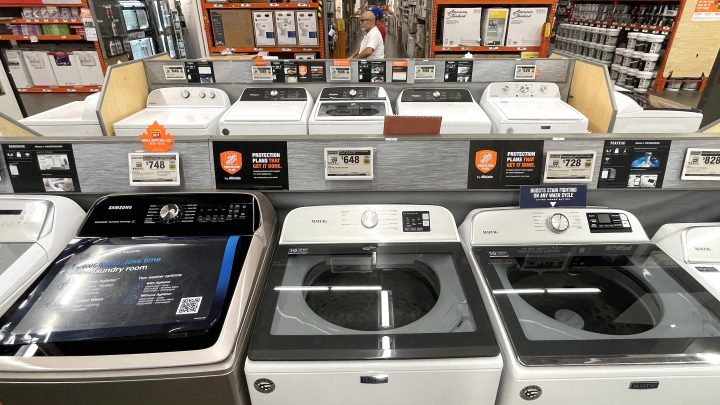
Yesterday’s efficiency standards are saving you money today
Yesterday’s efficiency standards are saving you money today

On Tuesday, Texas’ energy grid issued a maintenance pause despite mild April weather. Of course, one way to help out the grid would be to use less electricity. Think energy efficiency.
This week, the Department of Energy issued final energy efficiency standards for a number of appliances: commercial air conditioners and heat pumps, circulator pumps, dishwashers and beverage chillers. The change will save businesses and households billions on their future utility bills and reduce carbon dioxide emissions by millions of metric tons.
Since these new efficiency standards are all about the energy savings of the future, let’s look back at how the standards of yesteryear are impacting energy usage today.
All it takes is a walk through your home to see energy efficiency standards at work.
“Your refrigerator, or your air conditioner, or your clothes dryer would use much more electricity than it does if not for the standards that are on the books today,” said Andrew deLaski, executive director of the Appliance Standards Awareness Project.
Exactly how much electricity?
“A typical refrigerator today uses only one-fifth as much energy as a new refrigerator sold in the 1970s. That’s a very big deal. But it’s bigger, it’s got more features,” he said.
Dan Reicher, an entrepreneur, investor and policymaker focused on energy, said nowadays there’s improved insulation in the walls and improved motors that circulate the refrigeration fluid.
In the 1990s, along with Stanford University, Reicher worked for the Bill Clinton administration improving energy efficiency standards for appliances. During his tenure, he coined the phrase “building the fridge to the 21st century.”
“We set some pretty strict standards,” he said.
But the thing is, the energy savings of those standards accrue over years.
“The impact is measured over decades because people buy refrigerators and they keep them for a long time,” Reicher said.
And eventually those savings add up.
“The typical U.S. household spends about $500 less each year on utility bills, and that’s because of existing efficiency standards for a range of products,” said Berneta Haynes, an attorney with the National Consumer Law Center.
She said standards are especially helpful for low-income people who spend more of their paycheck on utility bills and tend to be renters using appliances provided by a landlord.
“Increasing the baseline efficiency of these appliances will ensure that landlords are actually putting more efficient appliances in these apartments,” Haynes said, so renters aren’t stuck with cheap, wasteful appliances.
There’s a lot happening in the world. Through it all, Marketplace is here for you.
You rely on Marketplace to break down the world’s events and tell you how it affects you in a fact-based, approachable way. We rely on your financial support to keep making that possible.
Your donation today powers the independent journalism that you rely on. For just $5/month, you can help sustain Marketplace so we can keep reporting on the things that matter to you.

















